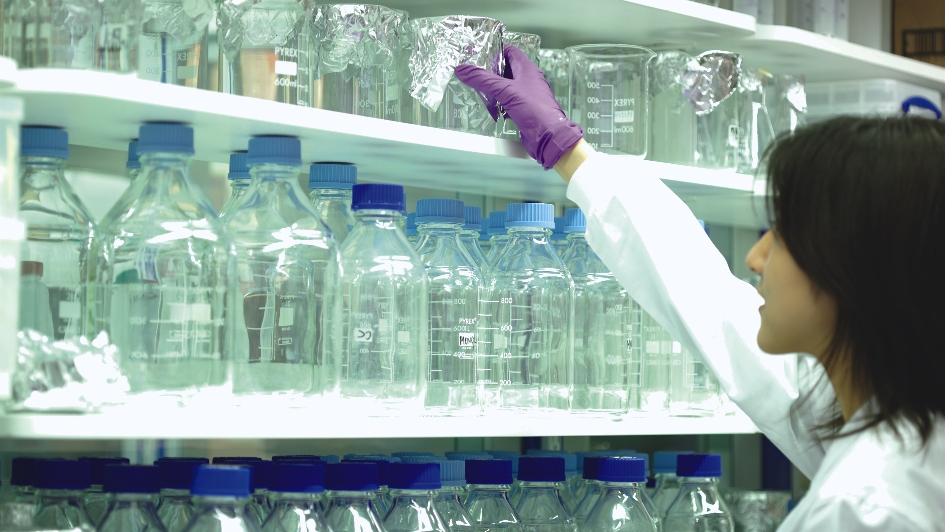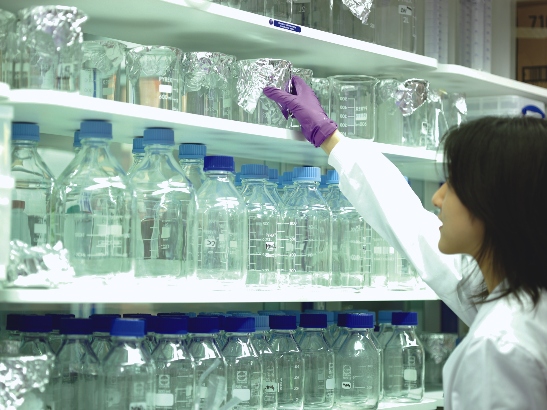
In August, the United Nations Intergovernmental Panel on Climate Change (IPPC) issued its sixth assessment report – warning that the narrow window of time we have left to avert the worst effects of climate change is fast disappearing. Headlines around the world cried ‘a code red for humanity’.
As a science-led organisation, it's in our nature to take these warnings seriously. Our laboratory work is carbon-intensive: from the energy used to run our buildings and equipment, to the greenhouse gas emissions associated with the supply of laboratory consumables, equipment and incineration of clinical waste.
The ICR joined many other organisations around the world in declaring a climate emergency earlier this year, and we are clear that having a positive impact on the environment and society is fundamental to our sustainability as an organisation and our ongoing success in carrying out our vital research.
Improving our sustainability
At the ICR, we have long been carrying out work to understand our crunch points, and to see where we can make the most impact. We’re also drawing on the passion and expertise of our staff to introduce greener practices into the way we work.
Running a lab sustainably is not without challenges, and our latest carbon footprinting data shows that 90 per cent of the ICR's climate impact comes from the goods and services we use every day.
Equipment like small water baths can consume as much energy as a dishwasher every hour, while ultra-low temperature freezers can use the same energy every day as an average household.
Then there is waste. It's estimated that 1.8 per cent of the world's plastic waste comes from labs alone. In the last 12 months, the ICR produced 218 tonnes of waste – that's equivalent to 55 elephants in weight.
For the ICR, the fastest way to cut our carbon footprint is to use lab consumables and equipment more efficiently – so for example, avoiding over-ordering, questioning the need to buy and avoiding unnecessary waste. Our staff and researchers have been playing a key role in introducing good working practices to make their research greener.
In-house tissue culture solutions
Our research relies on growing tissue cultures in the lab to study cancer. The tissue cultures need food, in the form of nutrient media solutions, to grow but these can come with a lot of plastic packaging, as well as the transport emissions to deliver the nutrient media solutions to our labs. One way we’re cutting our waste is to make our own.
Our technicians can produce over 100 different medias on request, manufactured on-site and packaged in glass bottles which can then be re-used.
Cleaning and reusing items like steel clinical tools can reduce greenhouse-gas emissions by as much as 75 per cent, compared with single-use plastic versions. It’s also cheaper, saving money that can be used elsewhere in our research.
Reducing energy use
Ultra-low temperature freezers keep tissue samples at a frosty -80°C. They are considered the best way to keep biological samples for long term storage, but not every sample needs to be kept so cold to remain viable.
Our researchers are taking on the Freezer Challenge in 2022: a global competition championing best practice in cold-storage management, including energy efficiency.
Running freezers at slightly higher temperatures, -70°C instead of -80°C, often has no effect on samples but uses 40 per cent less energy. And many reagents and samples don't need storage at ultra-low temperatures at all.
For example, DNA can be stored at -20°C, which uses up to 80 per cent less energy than a -80°C freezer, so storing samples at the right temperature can save a lot of energy.
Another simple but effective way to save energy is to turn off equipment when it’s not in use, and there is a lot of energy-hungry equipment in the average lab.
We are encouraging labs to label equipment that can be easily switched off when not in use, as a really simple way to remind colleagues about saving energy.
Responsible procurement
Some lab materials have short self-lives, so ordering too much may mean some will be thrown away before they can be used.
ICR researchers are encouraged to check what materials are available before buying more. And when deliveries do need to be made, researchers are offered advice on co-ordinating with other team members, to reduce the amount of packaging and minimise transport emissions.
Developing a sustainable procurement strategy for laboratories is a huge challenge but one we’re enthusiastic to take on. We've adopted ISO20400, the international standard for sustainable procurement, which we’ll use as a framework as our strategy develops.
Ultimately this will be a collaborative effort from staff all across the ICR to understand what the most sustainable choices available to us are, that will allow us continue to deliver the same great work with minimal climate impact.
Recycling waste
A key focus has been how we dispose of waste in laboratories, because of the particular complexities surrounding disposal of scientific waste and its potential to have significant environmental impact.
The ICR’s Facilities Services carried out a review of our lab practices and set up a new Waste and Logistics team to support research colleagues. Since then, 80 per cent of Facilities Services staff have also completed IEMA sustainability training, which has helped us to review sustainability in the workplace.
As well as staff training, posters around the ICR encourage colleagues to think about how they can dispose of waste, reduce energy consumption and reuse or recycle where possible.
We have established 'green' waste management routes, with new routes for the disposal of food and glass waste to ensure that we do not send any waste to landfill. We have also replaced all single-use plastic bottles across our canteens.
Next steps
The future of our planet is high in everyone’s consciousness, and this year sustainability and actions around reducing carbon emissions was one of the top five priorities that emerged from our survey of staff and students.
To safeguard our research for the future, and help to safeguard the future of the planet, we have to act – and we aim to be ambitious and to continue to challenge ourselves to continuously reduce our environmental impact.
